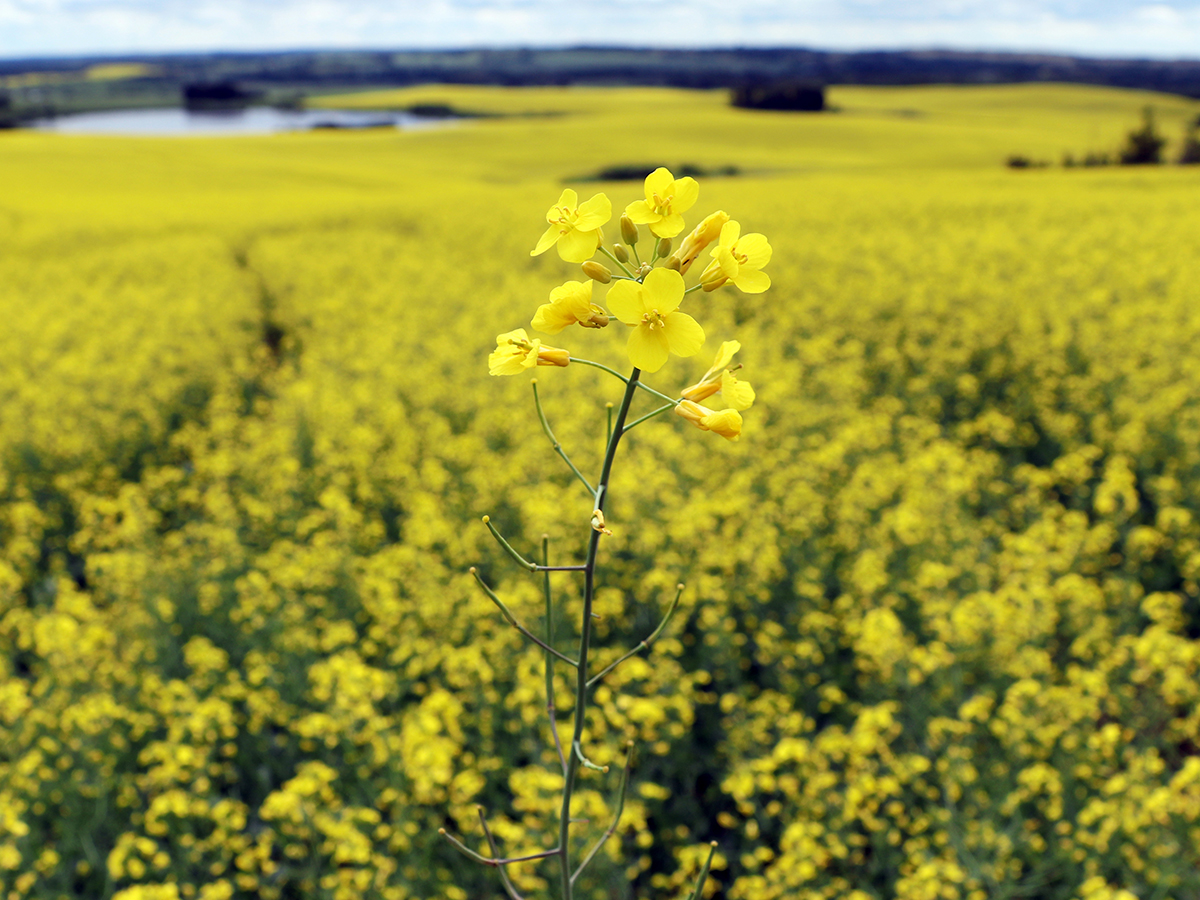Glacier FarmMedia – Members of the Alberta Canola Producers Commission have voted to increase the organization’s producer levy to $1.75 per tonne of canola sold — the first such hike since the service charge was raised to one dollar 22 years ago.
The vote — part of the commission’s annual general meeting Jan. 22 — tallied a total of 63 votes with 51 of those cast in the affirmative. The new amount will come into effect Aug. 1. The service charge comprises 90 per cent of Alberta Canola’s revenue each year.
The organization has run a budget deficit six of the past seven years. To stay operational, it has drawn on reserve funds built from surpluses accumulated between 2004 and 2017.
Read Also

More factors affecting winter weather
When you combine a weak La Niña, early Siberian snow, and a warm northern Pacific, it’s easy to see why long-range winter forecasting is so complex.
Roger Chevraux, now-former Alberta Canola chair and current Region 11 director, emphasized the need for the hike at the group’s annual general meeting, which took place live in Red Deer and streamed online.
“This was not something that was done in haste. This was done with a lot of thinking and a lot of soul searching because, quite frankly, there’s 12 directors in the room that are going to have to pay more money for it as well.”
In a recorded presentation prior to the vote, Rick Taillieu, director of engagement and analytics with Alberta Canola, outlined external factors putting pressure on the group’s revenue streams: inflation, less government infrastructure for agriculture and less government and private sector support for ag.
“The number one would be inflation,” said Taillieu.
Unsurprisingly, $1 per tonne of canola sold buys a lot less than it did in 2003 when the charge was increased from 50 cents. A “basket” of goods and services that sold for one dollar 22 years ago now costs $1.57.
“We’ve also gone through some hyperinflation the last few years,” he said.
A decline in harvested tonnes of canola in Alberta is another major concern.
“While (harvested acres) remain relatively flat since 2015, we have seen the harvested tonnes really decline since 2017.”
To illustrate, Taillieu compared two sets of five-year averages: 2015-19 and 2020-24. Harvested tonnes dropped 13 per cent (from six million to 5.2 million tonnes) between the two data sets.
Harvested acres dropped 0.7 per cent (6.32 to 6.28 million acres) while yield fell 12 per cent (42 to 37 bushels per acre). Taillieu called the latter a “clear sign there is work to be done in the research area.”
The road to the new service charge began in the fall of 2023 when Alberta Canola presented its 20-year financial history to its members at a series of grower engagement meetings. When the subject turned to a service charge increase, many producers appeared supportive of the move.
“We had open discussions about whether Alberta Canola should be looking for a service charge increase or whether we should be looking at reducing programs and services by up to 20, 25 per cent,” said Taillieu.
“Then in January 2024, at our annual general meeting in Grande Prairie, we had the same discussions and again received the same kind of support for a service charge increase, so the board announced it would conduct a service charge review.”
Over the past year, Alberta Canola has engaged extensively with members and consultancy firms to arrive at the final service charge amount.
“We started our review by contracting LeftField Commodities to do some production analysis for us. They looked out for the next five to 10 years what they felt the canola production scenarios in Alberta could look like under five different scenarios, ranging from flat acres and low yield growth all the way up to high acreage growth and high yield.
“Realistically, we’re looking at probably a (scenario) where we don’t anticipate a large number of acres shifting back to canola nor do we anticipate a dramatic return to higher yields.”
The commission also hired Hyde Management of Manitoba for a service charge review. When comparing Alberta Canola to other crop commissions in Alberta, the consultants found the commission falling behind in some key areas.
“Their two key findings were that Alberta Canola invests a smaller percentage of total revenue into research than any of the other commissions and that Alberta Canola has the most precarious financial position both in terms of cash flow and grower reserves,” said Taillieu.
The next step was a sensitivity analysis for four service charge amounts: $1, $1.50, $1.75 and $2.
According to Hyde Management, services would need to be cut by a minimum of 20 per cent if members voted against a service charge increase.
“A 50 cent increase to $1.50 per tonne would balance the budget with a very small amount of new spending, but rebuilding reserves or taking on any new investments would require absolutely no crop failures in the next 10 years and it would require one of those higher growth scenarios that we don’t feel is realistic,” Taillieu said.
The $2 per tonne charge was considered too large a burden for producers because it would mean “too much grower money in reserve.”
“So therefore they backed away from the $2 per tonne, which took us to the $1.75, which is the sweet spot,” said Taillieu.
“This will allow us to balance the budget, increase our research investment and also build future reserves back up so that we can absorb any future shocks due to crop failures or dramatic drops in acreage.”
The consultants also found that a bump to $1.75 would move the commission’s service charge revenue from $4.9 million into the $8.6 million range. The figures were based on average service charge revenue from 2021 to 2023.
Member equity — at $7 million total and $1.5 million in unrestricted member equity — has been low compared to Alberta Pulse and Alberta Grains, said Taillieu.
“Our sister organizations are somewhere in the neighborhood of $16 million in equity or more. We are very, very restricted. We are essentially running cash flow, and our members equity is committed to research projects that we already put our signature on the contract for.”
Moving the charge to $1.75 is also projected to increase the service charge as a per cent of sale price from 0.15 to 0.27 per cent., a figure Tailleau described as lower than Alberta Grains (0.35 per cent) and Alberta Pulse (0.75 per cent).
A viewer asked the board if an increased service charge would be disproportionately invested in research. The commission’s 2024-25 budget earmarks $1.4 million for research, down from the previous budget’s $1.5 million.
While former chair Roger Chevraux conceded research is a large part of the budget, he said he didn’t consider it disproportionate.
“I think all of our costs in all of our different regions are going up. Certainly, research is one that has been a big part of our budget, so I wouldn’t say that that’s disproportionate,” said Chevraux.
“One of the things we’re really going to try and do is, we’re going to try and fill those reserves to handle the fact that we’re going to have inflation for the next 20 years. Inflation, unfortunately, occurs every year and so we have to build up those reserves so that we can manage to not have to come back in five years and ask for it again.”
Another asked if the board intends to review the service charge after a period of time. Chevraux said yes.
“That is something that the board looks at every year. We do look at our reserves. We do look at our financial situation every year.”
















